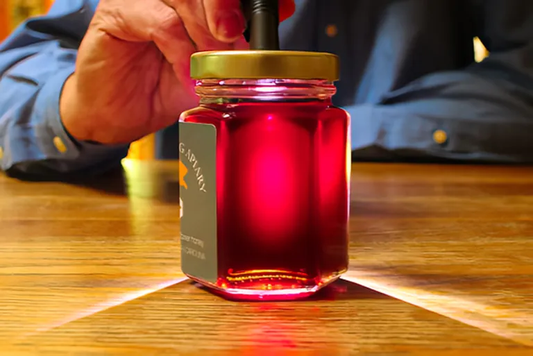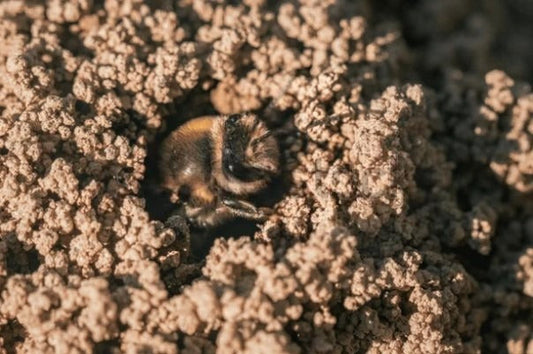It can be super easy to assume that just because bees lack visible ears, they must be deaf. But the truth is much more complex than it seems on the surface. The truth is much more fascinating. Ask any entomologist, and they will explain that the question “do bees have ears?” opens up the door to a more deeper understanding of how these insects interact with their environment.
The answer reveals a highly adapted and efficient sensory system, essential not just for survival but for the sophisticated social lives of honeybees.
The soundscape of the bees
Bees do not have ears in the way mammals or birds do. That pretty much is clear to everyone. There is no external structure, no ear canals, and no eardrums. Yet, this does not mean that bees are completely cut off from the sound around them. Instead, bees detect sound through vibration. Subtle shifts in the air and surrounding spaces, which they interpret using specialized organs.
So, do bees hear? Not technically. But they do sense sound.
The role of vibration in bee communication
Sound travels in waves and bees are tuned in to very specific frequencies. These waves are often generated during behaviors like buzzing, waggling or piping. When a honeybee performs a waggle dance to share the location of a food source, she produces vibrations that ripple through the air and the surface of the honeycomb. These signals are not lost on her nestmates. They pick them up using parts of their bodies designed to sense vibrations rather than hear sound more traditionally.

How bees detect sound without ears
Bees rely on specialized sensory organs to pick up ambient sound. Not through ears, but through finely tuned structures in their antennae and legs.
Vibration over sound
Bees can sense both airborne and surface-borne vibrations. While many insects will use tympanal organs to detect sound, bees use their chordotonal organs instead. These internal sensors are designed to convert physical vibrations into neural signals.
Johnston’s Organ
Located in the pedicel—the second segment of the antenna - Johnston’s organ is a key sensory hub. This organ contains over 300 nerve cells, also known as scolopidia, arranged in a bowl like formation. These cells detect the slightest movement of air particles caused by vibrations like wingbeats or buzzing sounds.
Once vibrations are detected, the Johnston’s organ converts them into electrical nerve impulses, sending this information to the bee’s brain for processing. This allows the bees to respond to sound in their environment, including communication from fellow hive members.
Subgenual organs
In addition to antennae, bees also use their legs to detect ambient vibrations. Subgenual organs, located in the tibia of each leg, are sensitive to substrate-borne signals. (vibrations that pass through the hive structure itself)
These signals are often the result of waggle dances or other hive activities. Once the subgenual organs pick up the vibration, they translate the mechanical signal into a nerve impulse and pass it to the central nervous system.
So again, do bees have ears? No. But their hind legs and antennae serve the function of hearing in ways perfectly suited to their needs.
The science behind bee hearing
Earliest known experiments that demonstrate bees’ ability to respond to sound go back to 1989. In one study, researchers were able to train bees to leave a feeding station when a specific sound was played to avoid a mild electric shock. This confirmed that bees could detect airborne sounds and respond accordingly.
Later studies refined this understanding. In 1991, bees were trained to choose between turning left or right at a feeder based on an audio cue. These results made it very clear: bees do not just detect vibrations; they can also differentiate between sound frequencies. Later studies showed that honeybees are especially sensitive to frequencies under 500 Hz, although they produce sounds in a much wider range.
So, when people ask, “Do bees have ears?" the answer is nuanced. Not in the anatomical sense, but they have a refined system for detecting sound vibrations that functionally replaces ears.

The importance of bee hearing
By knowing how bees perceive sound helps explain many behaviors inside the hive. The waggle dance that they do is a multisensory signal involving sound and movement. The buzzing of wings and waggling of the abdomen generate vibrations that are interpreted by other bees as directional instructions. Vibrational signals are also used for colony coordination. For example, piping sounds created by scout bees prepare the colony for swarming. Queens produce distinct tooting and quacking sounds that help regulate succession and signal their presence to rivals or worker bees.
None of this communication would be possible without the bee’s ability to detect vibrations. So even though the answer to do bees have ears is technically no, bees hear in a way that is deeply embedded in their biology and essential to their communication.
A reminder of nature’s ingenuity
The next time someone asks, do bees have ears, the answer is going to be simple but compelling. No, bees do not have ears, but they can sense sounds just fine. Their ability to detect sound through vibration is critical for survival, communication and for the the intricate social structures within the hive. And understanding this sheds light on yet another reason to respect and protect these remarkable pollinators. Their world is rich with signals that we can’t always perceive, but that does not make it silent. Just more interesting.
For even more fascinating stories and insights into the world of bees, consider following our full blog here.




